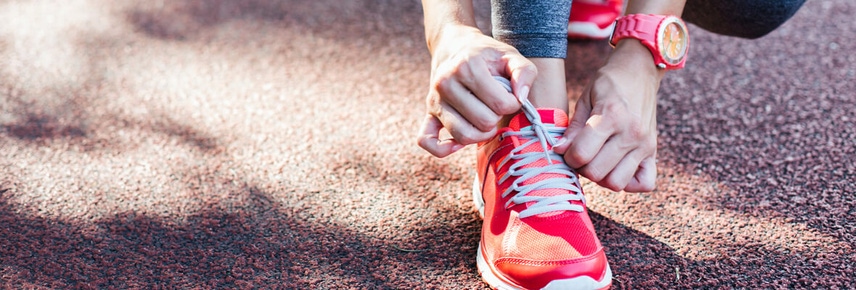
What to Eat for All Day Energy
We’ve all been there. That dreaded 3pm energy slump that leads to yet another cup of coffee or a sugary snack. Or maybe you’re waking up tired and struggling to find your mojo for the day ahead.
Maintaining a spring in your step and fighting those daily energy lows can be pretty simple if you know how.
Sanitarium dietitian Eliza Baird explains the easiest changes to increase your energy levels and shares exactly what she eats to maintain all-day energy.
1. Stop skipping breakfast
As they say in the Sound of Music, let’s start at the very beginning (it is, after all, a very good place to start).
Breakfast has long been called the most important meal of the day, and with good reason. It’s all in the name - it’s breaking your fast. So, you really should not be skipping it.
Mornings can be hectic but, no matter how busy they are, skipping brekkie could be undermining your day and setting you up for low energy from the get-go. It’s time to make yourself a priority in the mornings and find 5 minutes for brekkie to help fuel your body. You can also save some time by preparing breakfast the night before – give these delicious bircher pots a go!
A good breakfast is vital for a few reasons – it will give you a nutrition boost, it will help you maintain a healthy weight, it switches on the brain and, importantly, it will set you up for an energy-filled day.
When you eat a nutritious breakfast, you are less likely to be hungry and overeat during the rest of the day. That’s because a healthy breakfast can help stabilise blood sugar levels, which regulates appetite and energy.
The best breakfasts for keeping your energy levels up are those with low-GI (glycaemic index) foods – these are known to provide longer-lasting energy, rather than a quick burst, followed by a slump.
Focus on wholegrains and whole foods with breakfast ideas such as:
- Avocado on wholegrain toast,
- Wholegrain cereal with fruit and low-fat milk or plant-based alternative
- Scrambled tofu or eggs with a side of spinach on grainy bread
- Bircher muesli
Tip - if you battle with brekkie because you’re not hungry first thing in the morning, maybe try to cut back on snacking late at night. Or make sure you pack something easy and healthy to have later on, such as some cereal, yoghurt and fruit.
2. Become a fan of snacks
I’m a big fan of listening to your appetite and snacking if you feel your energy fade, or if you get a bit peckish between meals.
“I think people’s perception of snacks is that they’re something unhealthy – like biscuits, or chips – whereas foods like veggie sticks, fruit, wholegrain crackers, nuts and seeds are great, easy snack options and will help get you from one meal to another without the fatigue,” Eliza says.
If you’re not going to be at home, you need to be thinking ahead so you have some good-quality food on hand for those mid-morning and mid-afternoon snacks. By eating low-GI food across the day, including snacks, you’re more likely to maintain even energy levels.
My go-to snack ideas include:
- Nut butter on apple slices,
- An almond milk smoothie – also good for sneaking in extra veggies or fruit,
- Handful of unsalted nuts and seeds such as walnuts, cashews and pumpkin seeds,
- Peanut butter protein balls
- Hummus with veggie sticks or wholegrain crackers, or
- Crispy chickpeas or edamame.
3. Make friends with carbs
Even if you are trying to lose weight, cutting carbs is not the answer. Carbs are crucial to maintaining energy levels throughout the day. Our bodies and brains need carbs to function.
They are an essential nutrient – just like protein and healthy fats – and we need a certain amount every day to sustain our energy levels and fuel our body and brain.
The Australian Dietary Guidelines recommend we get 45-65% of our energy needs from carbs.
Poor carbs, they have been given a bad rap in recent years with the rise in popularity of very low-carb diets, such as keto, Atkins and paleo. These diets may result in fast weight loss if strictly adhered to, but in the long-term restricting carbs to this extent can impact metabolism, and actually make weight control tougher over time.
A healthier approach for your waistline and energy levels is to get smart when it comes to carbs and choose those that are high quality, such as wholegrain, high fibre and low-GI foods. Many plant foods fit into the high-quality carb category. They include grainy breads, wholegrain cereals, wholemeal pasta, lentils, beans, fruit and starchy veggies such as potato and sweet potato. Start with low-GI swaps such as swapping white bread for grainy bread, quick oats for rolled oats, instant noodles for soba noodles, and processed snacks with a piece of fruit.
4. Energy boosting vitamins and foods that have them
When we think about boosting our energy levels, we often think of iron (more on that below). But there are lots of vitamins and nutrients that may ensure you have a spring in your step all day long.
Alongside iron, copper, Vitamin B1 and pantothenic acid (Vitamin B5) will help your body create energy, while Vitamin B12, B6 and C, as well as calcium, iodine and magnesium, will help your body use and release that energy.
That doesn’t mean you need to go buying expensive supplements for an energy fix. Incorporating those vitamins and minerals in your daily diet is easy.
Copper is found in mushrooms and cashews, B vitamins and iron in fortified breakfast cereals (Vitamin B1 can also be found in beans and lentils), and Vitamin B5 in wholegrains.
Vitamin C has long been linked to citrus, but is also found in broccoli, Brussels sprouts and strawberries. Many plant-based milks and food alternatives are now fortified with Vitamin B12.
The take-out is simply to eat a wide variety of plant foods to get the vitamins and minerals you need for long-lasting energy.
5. Keep an eye on iron
Many women struggle to get enough iron in their diets, especially if they have heavy periods.
Iron is a mineral that is crucial for good health, but is one of the most common nutrition deficiencies globally. Besides fatigue, other symptoms include breathlessness, poor memory and concentration, being prone to colds, decreased libido, and cold hands and feet.
There are plenty of great plant-based sources of iron you can include in your diet – having 2 Weet-Bix biscuits provides 3mg of iron – 25% of the Recommended Dietary Intake (RDI). Pairing these with a source of Vitamin C (think citrus fruits, berries, tomatoes, broccoli) is a great way to boost absorption. If you’re worried about your iron, your GP can easily organise a blood test to check your levels.
Having enough iron in your diet is so important for helping to avoid that 3pm slump, so you need to ensure you’re getting the right amount.
6. Watch your water
Keeping up your energy is not all about food, you need to stay hydrated too. Fatigue is one of the first signs of dehydration, so you should be drinking water throughout the day to make sure you avoid those energy lows.
Sometimes you can feel tired simply because you’re mildly dehydrated. So, grab a glass of water. It may do the trick, especially after exercise.
It can also help with food cravings and keeping your weight in check. Sometimes we think we’re hungry, and are tempted to reach for an unhealthy snack, but what we really need is a big glass of water!
My day on a plate
Need some more fatigue-fighting ideas? Here’s what Eliza eats in a day to keep up her energy levels from morning to bedtime.
- Breakfast: Wholegrain cereal and soy milk topped with peanut butter and berries.
- Morning snack: Small handful of walnuts or a banana.
- Lunch: Dinner leftovers, such as lentil dahl with brown rice.
- Afternoon snack: Mandarin or carrot sticks / wholegrain crackers with small serve of hummus.
- Dinner: Cous cous and roast veg salad with stirred through rocket, pepitas and feta.
- Supper: If I’m still hungry, a small bowl of yoghurt.
- All day: Plenty of water!

The latest nutrition advice, plus health and wellness tips delivered to your inbox monthly

